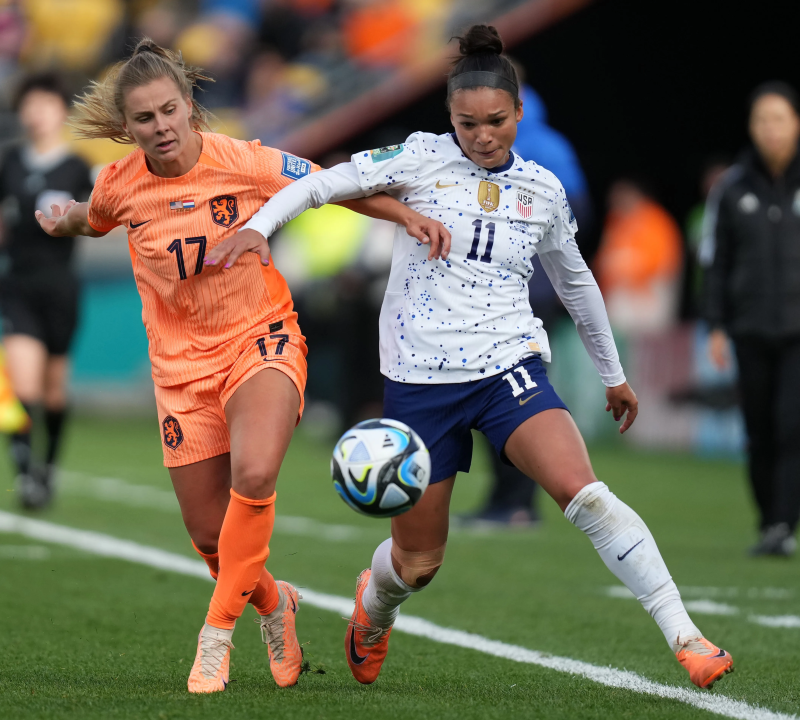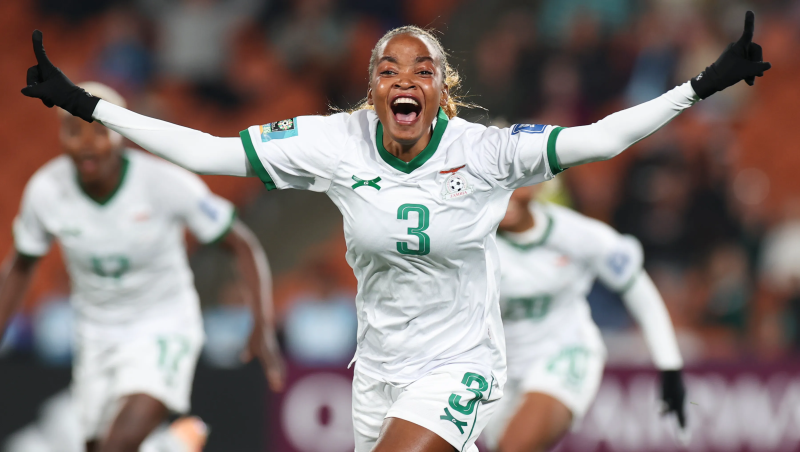'Amazing to see': World Cup's compelling matches show what investing in women gets you
AUCKLAND, New Zealand – The promised parity is here.
For several years now, coach Vlatko Andonovski and the U.S. women have been saying the days of them bulldozing opponents is over. That the global game is getting better and the gap between the world’s top teams and those on the second, third and even fourth tiers is closing. Rather than exposing weaknesses in the women’s game, an expanded, 32-team World Cup would show just how much progress has been made.
They were right. About all of it.
This World Cup has been a rollicking carnival of fun, showcasing the game’s growth and giving a glimpse of its still-vast potential. Blowout games have been the exception, rather than the norm. Rankings and reputations have meant nothing; just ask Germany and Colombia. Or France and Jamaica.
EQUALITY:USWNT finally getting what it's worth, but plenty other World Cup teams still are fighting
WORLD CUP CENTRAL: 2023 Women's World Cup Live Scores, Schedules, Standings, Bracket and More
Even the World Cup newbies have done themselves proud. Of the eight teams playing in their first World Cup, Ireland, Morocco, the Philippines and Zambia all scored at least one goal. Morocco, the Philippines and Zambia got their first wins. Portugal still has a chance to advance to the knockout stage going into its third group game, Tuesday night against the USWNT.
(Haiti, Panama and Vietnam still have their last group-stage game to play.)
“I said before the tournament, I don’t think we have to go out and prove anything as players. Just come out and watch the show because we already knew it was going to be amazing,” Megan Rapinoe said earlier this week.
“I think all the players should feel an immense sense of pride about the quality of the tournament, and about us backing up everything that we’ve said about ourselves. We’ve had to bet on ourselves so much, and we hit every time.”

An uphill climb
For decades, the women’s game succeeded almost in spite of itself. Most federations either ignored their women’s teams or treated them with indifference. Even the USWNT, the most successful team in the game’s history, was subjected to unequal pay and working conditions.
At some point, however, federation officials either decided they had a duty to do right by their women players or realized they were costing themselves buckets of money by continuing to undervalue the game. Given FIFA’s history of greed, I think we can agree it was probably the latter.
Whatever the reason, teams began investing. And quickly saw how big a return they could get for relatively small investment.
The Netherlands reached the World Cup final in only its second appearance. Spain and England bolstered their domestic leagues and quickly reaped the benefits, with Spain winning the U-19 World Cup last year after being runner-up four years earlier and England winning the European championship last year.
England’s first major title since the men won the World Cup in 1966, I might add.
FIFA, again knowing there’s money to be made, is now pumping cash into developing programs. And, again, the results are quick to be seen.
Tighter scores, more upsets
Even with the expanded field, the most lopsided score through 38 games was Norway’s 6-0 victory over the Philippines – and that was a game in which Norway had to run it up to get a spot in the knockout rounds. All but 10 games have been decided by two goals or less.
“The teams that are ranked anywhere between 15 and 40 are the ones that have grown probably the most and are the ones that are making this tournament interesting,” Andonovski said.
“It’s not that there’s much of a difference (in) the wins and losses between the top 10, 12, 15 teams,” he added. “It’s the difference between the top 15 and 15 to 40 (that) is a good mark or indication of how much the women’s soccer game has grown.”
The growth will only keep accelerating, too. FIFA president Gianni Infantino has said he wants the prize pools for the men’s and women’s tournaments to be equal, as early as four years from now, and signaled his seriousness by more than tripling what FIFA is awarding for this World Cup.
Of particular interest is the $1.56 million each federation got to cover preparations for this tournament, with the requirement that any excess funds go toward development of the women’s game. Given teams don’t have to use that to pay players – FIFA is using a separate pot to give each player at the tournament a minimum of $30,000 – that’s a potential windfall for smaller countries.
The catch is you have to invest, and care enough, about your women’s program to get to the World Cup in the first place. The old, “You have to spend money to make money” idea.
“To see a lot of that equalized, just the general conditions around teams increased and being resourced in a way that’s on par or level with their talent level on the field, is amazing to see,” Rapinoe said before the World Cup began. “Obviously there’s a long way to go in a lot of different areas. But we’ve made tremendous strides in our game and we’ll continue to do that.
"For that reason, I think this is going to be the best World Cup by far. You’re going to see the best product on the field, and that’s because players are going to be able to … just focus on the game and go out there and provide the entertainment everybody wants.”
The women's game has more than delivered on its promise. It's up to FIFA and its federations to continue doing the same.
Follow USA TODAY Sports columnist Nancy Armour on Twitter @nrarmour.

Disclaimer: The copyright of this article belongs to the original author. Reposting this article is solely for the purpose of information dissemination and does not constitute any investment advice. If there is any infringement, please contact us immediately. We will make corrections or deletions as necessary. Thank you.







